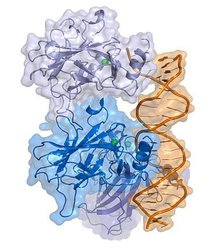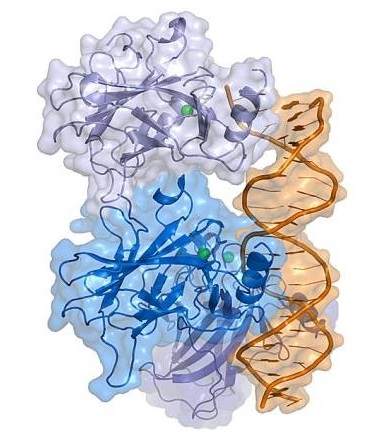
Oct. 28, 2016
By: Michael Feldman
A new report by Texas Advanced Computing Center (TACC), describes how the center’s Stampede supercomputer is being used by a researchers to find out how the p53 protein helps prevent cancer cells from developing. The p53 protein is considered one of the most critical natural defenses the body has to protect itself against a wide array of human cancers, which has earned it a great deal of attention from medical researchers and other life scientists.
 At the high level, p53 seems to work by detecting DNA damage that would lead to cancerous growth and then inducing the cell to self-destruct before it spreads. Besides acting as a tumor suppression protein, p53 also helps to regulate other critical aspects of cells, including cellular senescence and DNA repair associated with aging. As a result, there has been a lot of wet lab experimental work focused on how this molecule does its job, as well as how mutated versions of it leads to cancer and other undesirable health outcomes.
At the high level, p53 seems to work by detecting DNA damage that would lead to cancerous growth and then inducing the cell to self-destruct before it spreads. Besides acting as a tumor suppression protein, p53 also helps to regulate other critical aspects of cells, including cellular senescence and DNA repair associated with aging. As a result, there has been a lot of wet lab experimental work focused on how this molecule does its job, as well as how mutated versions of it leads to cancer and other undesirable health outcomes.
According to the TACC report, the work there to study p53 in silico is being led by computational biophysicist Dr. Rommie Amaro from the University of California, San Diego. Using Stampede, the center’s 5-petaflop supercomputer, she and her team observed the 1.5-million-atom molecule in action for nearly a millisecond. By doing so, for the first time they were able to see how p53 interacts with cellular DNA in a number of ways they had not expected, providing some clues on how the protein does its cancer prevention magic.
From the TACC report:
"As the systems get bigger, much more computational time is required. Previously the simulations were run for a few nanoseconds. Now we have microseconds of dynamical data, which is 1,000x more. In this case we were looking at over a dozen domains and in complex with the DNA. It gives us a much more complete picture of what is actually happening. It's a few steps closer to reality than anything we've been able to accomplish yet," Amaro explained.
She is hoping that the knowledge gained from these supercomputing simulations will help lead to novel cancer therapies that could be delivered at the early stages of the disease.
